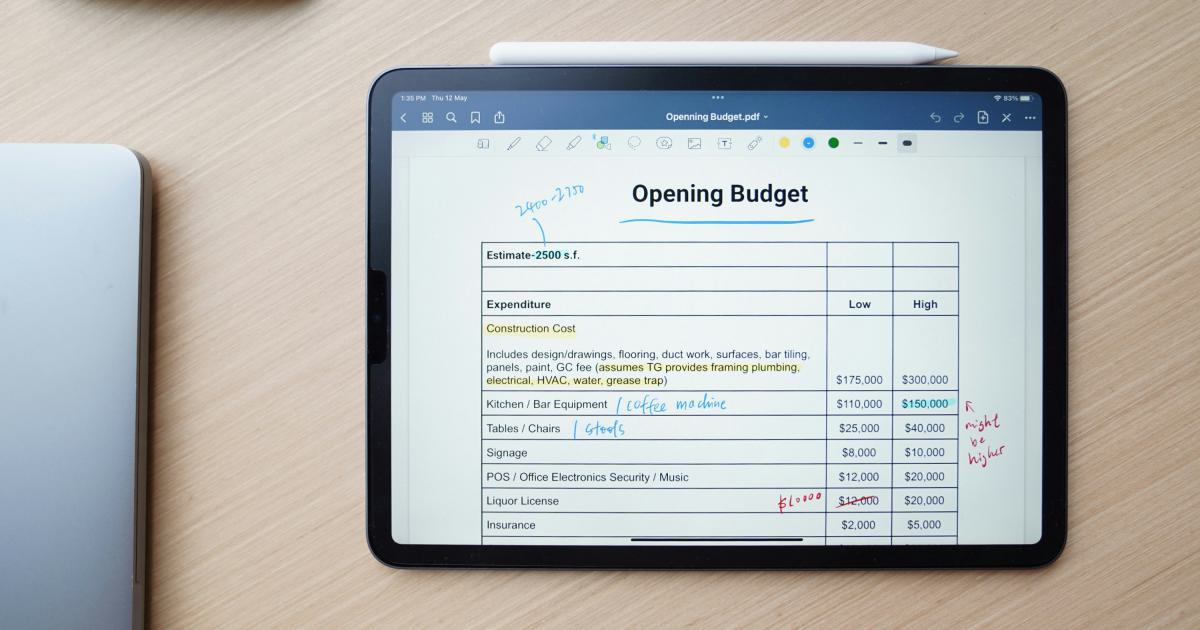How to Leverage Crawl Budget Metrics Effortlessly


Understanding Crawl Budget Metrics in SEO
In the ever-evolving landscape of search engine optimization (SEO), one crucial aspect that often goes overlooked is crawl budget metrics. Crawl budget refers to the number of pages a search engine, such as Google, is willing to crawl and index on your website within a given timeframe. Effectively managing and leveraging this budget can have a significant impact on your website's visibility and search engine rankings.

Crawl budget metrics provide valuable insights into how search engines perceive and interact with your website. By understanding and optimizing these metrics, you can ensure that your most important content is consistently crawled and indexed, leading to improved organic search performance.
In this comprehensive guide, we'll delve into the world of crawl budget metrics, exploring the key factors that influence them, and equipping you with practical strategies to leverage them effortlessly.
Uncovering the Importance of Crawl Budget Metrics
Crawl budget metrics are a crucial component of SEO, as they directly impact the visibility and discoverability of your website in search engine results. These metrics determine how effectively and efficiently search engine bots, such as Googlebot, can navigate and index your website's content.
Understanding the Crawl Budget Concept
The crawl budget is the maximum number of URLs a search engine is willing to crawl on your website within a given timeframe. This budget is influenced by various factors, including the size of your website, the quality and relevance of your content, and the overall health of your website's technical infrastructure.
"Crawl budget management is a foundational aspect of SEO that can have a significant impact on a website's visibility and search engine rankings."
By optimizing your crawl budget metrics, you can ensure that your most valuable and important content is consistently crawled and indexed by search engines, leading to improved organic search performance and increased website traffic.
The Relationship Between Crawl Budget and Rankings
Crawl budget metrics are closely tied to your website's search engine rankings. Search engines, such as Google, prioritize the crawling and indexing of high-quality, relevant content. If your website's crawl budget is not being used efficiently, it can result in search engines not discovering or indexing your most important pages, ultimately impacting your rankings.
On the other hand, by optimizing your crawl budget metrics, you can ensure that your website's most valuable content is regularly crawled and indexed, leading to improved visibility in search engine results pages (SERPs) and higher rankings for your target keywords.
Analyzing the Key Crawl Budget Metrics
To effectively leverage crawl budget metrics, it's essential to understand the various metrics that contribute to the overall crawl budget. Let's explore the most critical crawl budget metrics and how they impact your website's SEO performance.
Crawl Rate
The crawl rate refers to the number of pages a search engine, such as Google, is willing to crawl on your website within a specific timeframe. This metric is influenced by factors such as the size of your website, the quality and relevance of your content, and the overall health of your website's technical infrastructure.

To optimize your crawl rate, you can focus on:
- Streamlining your website's technical infrastructure
- Improving the quality and relevance of your content
- Implementing effective URL management and internal linking strategies
Crawl Demand
Crawl demand is a measure of how often search engines, such as Google, are requesting to crawl your website's pages. This metric is influenced by factors such as the popularity and relevance of your content, the frequency of updates, and the level of user engagement on your website.

To optimize your crawl demand, you can focus on:
- Producing high-quality, relevant, and engaging content
- Regularly updating and refreshing your website's content
- Encouraging user engagement through features like comments, social sharing, and user-generated content
Crawl Errors
Crawl errors refer to any issues or problems that search engines encounter when attempting to crawl your website's pages. These errors can include broken links, server errors, and other technical issues that can hinder the efficient crawling and indexing of your content.

To address crawl errors, you can:
- Conduct regular website audits to identify and fix technical issues
- Implement robust error monitoring and reporting mechanisms
- Ensure your website's technical infrastructure is well-maintained and optimized
Crawl Efficiency
Crawl efficiency is a measure of how effectively search engines, such as Google, are able to crawl and index your website's content. This metric is influenced by factors such as the structure and organization of your website, the quality and relevance of your content, and the overall technical health of your website.

To improve your crawl efficiency, you can focus on:
- Optimizing your website's information architecture and internal linking structure
- Ensuring your content is well-structured, relevant, and user-friendly
- Maintaining a clean and efficient website technical infrastructure
Crawl Budget Allocation
Crawl budget allocation refers to how search engines, such as Google, distribute their crawling resources across your website's different pages and sections. This metric is influenced by factors such as the importance and relevance of your content, the website's overall structure, and the presence of any crawl-limiting factors.

To optimize your crawl budget allocation, you can:
- Prioritize and highlight your most important and valuable content
- Ensure your website's structure is logical and easy to navigate
- Identify and address any crawl-limiting factors, such as duplicate content or thin pages
By understanding and optimizing these key crawl budget metrics, you can significantly improve your website's visibility and search engine rankings.
Strategies for Effective Crawl Budget Management
Now that we've covered the fundamental concepts of crawl budget metrics, let's dive into practical strategies for effectively managing and leveraging them.
Prioritize Important Content
One of the most effective ways to optimize your crawl budget is to ensure that your most important and valuable content is consistently crawled and indexed by search engines. This involves identifying and prioritizing your cornerstone content, which are the pages and articles that are most essential to your website's overall strategy and objectives.

To prioritize your important content, you can:
- Conduct a content audit to identify your top-performing and most valuable pages
- Ensure these pages are well-structured, with clear and relevant content
- Optimize your internal linking structure to strengthen the prominence of your cornerstone content
- Monitor and address any technical issues that may be hindering the crawling and indexing of these pages
Eliminate Crawl Waste
Crawl waste refers to the unnecessary or unproductive crawling of pages on your website, which can negatively impact your overall crawl budget. This includes pages with low informational value, such as duplicate content, thin pages, and pages with little or no unique content.

To eliminate crawl waste, you can:
- Identify and remove or noindex pages with low informational value
- Consolidate or merge similar pages to eliminate duplication
- Ensure your website's structure is clean and well-organized, with clear navigation and internal linking
- Implement effective URL management strategies to avoid the creation of unnecessary pages
By eliminating crawl waste, you can free up your crawl budget to focus on the most important and valuable content on your website.
Optimize Crawl Frequency
The crawl frequency of your website's pages is another crucial aspect of crawl budget management. Search engines, such as Google, will allocate more of their crawling resources to pages that are updated more frequently or are considered more important.

To optimize your crawl frequency, you can:
- Regularly update and refresh your website's content, especially your most important pages
- Implement effective content management strategies to ensure your website is consistently updated
- Leverage structured data and other techniques to signal the importance and relevance of your content to search engines
By optimizing your crawl frequency, you can ensure that your most valuable content is consistently crawled and indexed, leading to improved visibility and search engine rankings.
Improve Technical Site Health
The overall technical health of your website plays a crucial role in optimizing your crawl budget metrics. Issues such as slow page load times, broken links, and server errors can all negatively impact the ability of search engines to efficiently crawl and index your content.

To improve your website's technical health, you can:
- Conduct regular website audits to identify and address any technical issues
- Optimize your website's infrastructure, including server configurations, caching, and content delivery networks
- Implement robust error monitoring and reporting mechanisms to quickly identify and resolve any problems
- Continuously monitor and optimize your website's performance and user experience
By maintaining a healthy and well-optimized technical infrastructure, you can ensure that search engines can efficiently crawl and index your website's content, maximizing the impact of your crawl budget.
Leverage Crawl Budget Reporting Tools
To effectively manage and optimize your crawl budget metrics, it's essential to have access to reliable reporting tools and data. Various SEO software platforms and webmaster tools offer features that provide insights into your website's crawl budget, allowing you to identify areas for improvement and track the impact of your optimization efforts.

Some of the key crawl budget reporting tools and features you can leverage include:
- Google Search Console's "Coverage" and "Index" reports
- Ahrefs' "Site Audit" and "Crawl Budget" features
- SEMrush's "Site Audit" and "Technical SEO" tools
- Screaming Frog's website crawling and auditing capabilities
By utilizing these reporting tools, you can gain a comprehensive understanding of your website's crawl budget metrics, identify areas for improvement, and track the impact of your optimization efforts over time.
Addressing Challenges and Controversies
While the effective management of crawl budget metrics can lead to significant SEO benefits, there are also some challenges and controversies surrounding this topic that are worth addressing.
Balancing Crawl Budget Allocation
One of the primary challenges in crawl budget management is striking the right balance between allocating resources to your most important content and ensuring that your entire website is consistently crawled and indexed. This can be particularly challenging for larger websites with a vast amount of content.

To address this challenge, it's essential to prioritize your content based on its importance and relevance, while also implementing strategies to ensure that your entire website is efficiently crawled and indexed. This may involve techniques such as content pruning, URL management, and the strategic use of robots.txt and noindex directives.
Dealing with Fluctuations in Crawl Budget
Crawl budget metrics can be subject to fluctuations over time, as search engines adjust their crawling algorithms and priorities. This can make it challenging to maintain a consistent and optimized crawl budget for your website.

To address this challenge, it's important to continuously monitor your crawl budget metrics, identify any significant changes, and adapt your optimization strategies accordingly. This may involve regularly reviewing your website's technical health, monitoring for any algorithm updates, and being prepared to make adjustments to your content and technical infrastructure as needed.
Navigating Conflicting Advice and Practices
In the world of SEO, there can be conflicting advice and opinions on the best practices for managing crawl budget metrics. This can make it challenging for website owners and SEO professionals to determine the most effective approach.

To navigate these challenges, it's crucial to rely on authoritative sources, such as search engine guidelines and industry-leading SEO experts, when developing your crawl budget optimization strategies. Additionally, it's important to test and validate the effectiveness of different approaches within the context of your specific website and industry.
By addressing these challenges and controversies, you can develop a more comprehensive and effective approach to leveraging crawl budget metrics for improved SEO performance.
Practical Applications and Real-World Scenarios
Crawl budget optimization is not just a theoretical concept; it has practical applications and implications in the real world. Let's explore some real-world scenarios where effective crawl budget management can make a significant difference.
E-commerce Website Optimization
For e-commerce websites with large product catalogs, managing the crawl budget is crucial to ensure that the most important product pages are consistently indexed by search engines. By prioritizing high-converting product pages, optimizing the internal linking structure, and eliminating crawl waste, e-commerce businesses can improve their visibility in search results and drive more targeted traffic to their website.

News and Media Website Optimization
In the fast-paced world of news and media, keeping your website's content up-to-date and consistently indexed is essential. By optimizing your crawl budget, you can ensure that your latest and most relevant articles are quickly discovered and indexed by search engines, helping you stay ahead of the competition and maintain a strong online presence.

Enterprise-Level Website Optimization
Large enterprise-level websites with complex structures and vast amounts of content often face unique challenges in managing their crawl budget. By implementing robust crawl budget optimization strategies, such as content prioritization, URL management, and technical infrastructure improvements, these organizations can ensure that their most valuable content is consistently discovered and indexed by search engines, leading to improved visibility and higher search engine rankings.

Regardless of the industry or the size of your website, effective crawl budget management can have a significant impact on your overall SEO performance and the success of your online presence.
Conclusion: Unlocking the Power of Crawl Budget Metrics
In the dynamic world of search engine optimization, crawl budget metrics are a critical component that cannot be overlooked. By understanding and optimizing these metrics, you can significantly improve the visibility and discoverability of your website's content, leading to enhanced search engine rankings and increased organic traffic.
Throughout this comprehensive guide, we've explored the key crawl budget metrics, including crawl rate, crawl demand, crawl errors, crawl efficiency, and crawl budget allocation. We've also delved into practical strategies for effectively managing and leveraging these metrics, such as prioritizing important content, eliminating crawl waste, optimizing crawl frequency, and improving technical site health.
By implementing the strategies outlined in this article, you can unlock the full potential of your website's crawl budget, ensuring that your most valuable content is consistently crawled and indexed by search engines. Remember, crawl budget management is an ongoing process, and it's essential to continuously monitor, analyze, and optimize your website's performance to maintain a strong online presence.
As you embark on your journey to master crawl budget metrics, remember to stay up-to-date with the latest industry trends, guidelines, and best practices. By staying informed and adaptable, you can navigate the ever-evolving landscape of search engine optimization and position your website for long-term success.
Further Reading
- Google's Guide to Crawl Budget Optimization
- Ahrefs' Guide to Understanding and Optimizing Crawl Budget
- Search Engine Journal's Article on Crawl Budget Metrics
- Moz's Guide to Technical SEO and Crawl Budget
- Search Engine Land's Article on Maximizing Crawl Budget
What other strategies or techniques have you found effective in leveraging crawl budget metrics for your website's SEO success? We'd love to hear your thoughts and experiences in the comments below.
Are You Crushing It in Internet Marketing?
Struggling to boost your online visibility and traffic? Semrush is the ultimate platform for digital marketers like you. With powerful SEO tools and competitive data insights, you can optimize your website, content, and campaigns for maximum impact.
Join over 7 million marketers already using Semrush to outrank their competitors, drive more qualified leads, and grow their businesses online. Get started today with a 7-day free trial, and unlock the full potential of your internet marketing strategy.
Unlock the Power of SEO with Semrush
Are you struggling to boost your online visibility and drive more traffic to your website? Semrush has the solution.
Our comprehensive platform offers advanced keyword research, competitor analysis, and SEO audits, empowering you to optimize your content and outrank your competition.